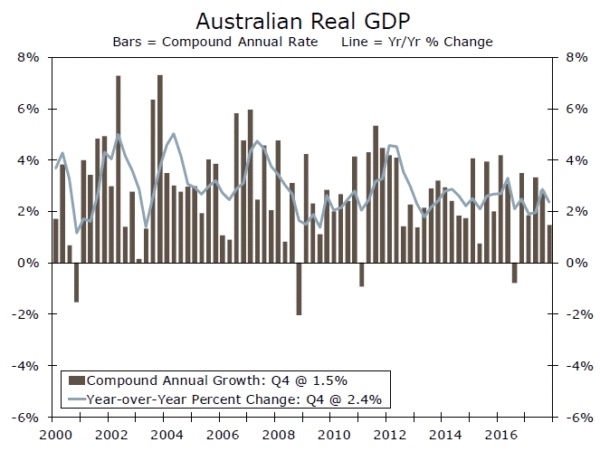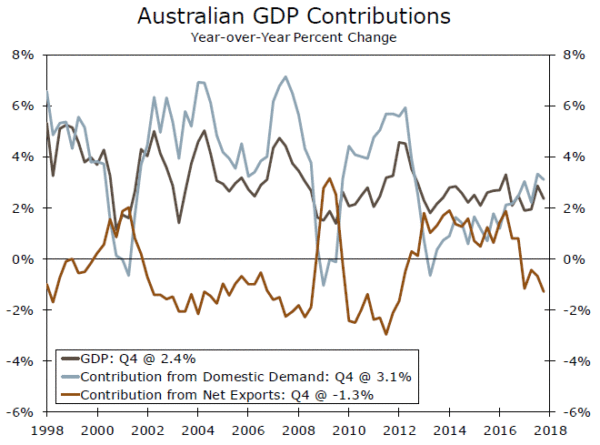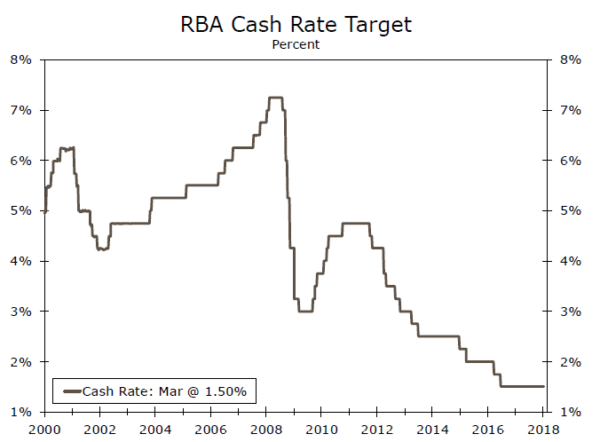We are not terribly concerned by the miss in this week’s GDP report, as the drags from trade and business spending will likely prove temporary. Still, the RBA is apt to keep rates on hold until wage inflation shows up.
Drags from Trade and Business Spending to Blame
The Australian economy expanded just 0.4 percent (not annualized) in the fourth quarter, slightly below market expectations of 0.5 percent. It bears noting that growth in the prior quarter was revised marginally higher, so the growth in the fourth quarter was coming off a slightly higher base. Temporary trade dynamics and weakness in business investment are much to blame for the softness of fourth quarter growth. Domestic demand was actually quite strong over the period, reflecting gradual growth in the labor market and perhaps suggesting stability from consumer spending ahead.
The unemployment rate has trended lower, even as labor force participation approaches a record high. Despite these improvements in the labor market, wage growth remains modest…at least for now. There is a growing perception that improvement in the labor market will inevitably translate into higher wages. In the official statement explaining its decision to keep the cash rate unchanged earlier this week, the Reserve Bank of Australia (RBA) observed, “the rate of wage growth appears to have troughed.”
The RBA went on to describe the lack of skilled workers available to employers. Increased competition for skilled labor in particular could eventually translate into the long-anticipated wage growth, which would foster increases in inflation this year.
Even without the wage growth, the improved labor market dynamics appear to be supportive of GDP growth. Household spending increased 1.0 percent over the quarter, as retail sales showed some upward momentum after signs of weakness in the third quarter. The fourth quarter was the fastest quarterly rate of personal consumption growth for the whole of 2017. To the extent that the anticipated improvements in wage growth materialize, we should expect to see continued support from consumer spending in the quarters ahead.
Similarly, the slight pick-up in imports further signals continued domestic demand. However, export growth significantly slowed over the quarter, causing net exports to shave off 1.9 percentage points from the headline quarterly figure. With the global growth backdrop improving, we do not expect exports to continue to weigh on growth.
“Holding the stance of monetary policy unchanged”
As was widely expected, the RBA held its key lending rate unchanged at 1.50 percent. We expect the RBA to stay on hold, as it remains clear that policymakers are content with current economic conditions. The language in the policy statement continues to emphasize improving global dynamics, without implying a particularly hawkish stance. Our baseline expectation is that the RBA will continue to remain on hold, before eventually joining other global central banks in normalizing policy later this year with an eventual rate hike. The key is whether or not the elusive wage growth materializes.

















